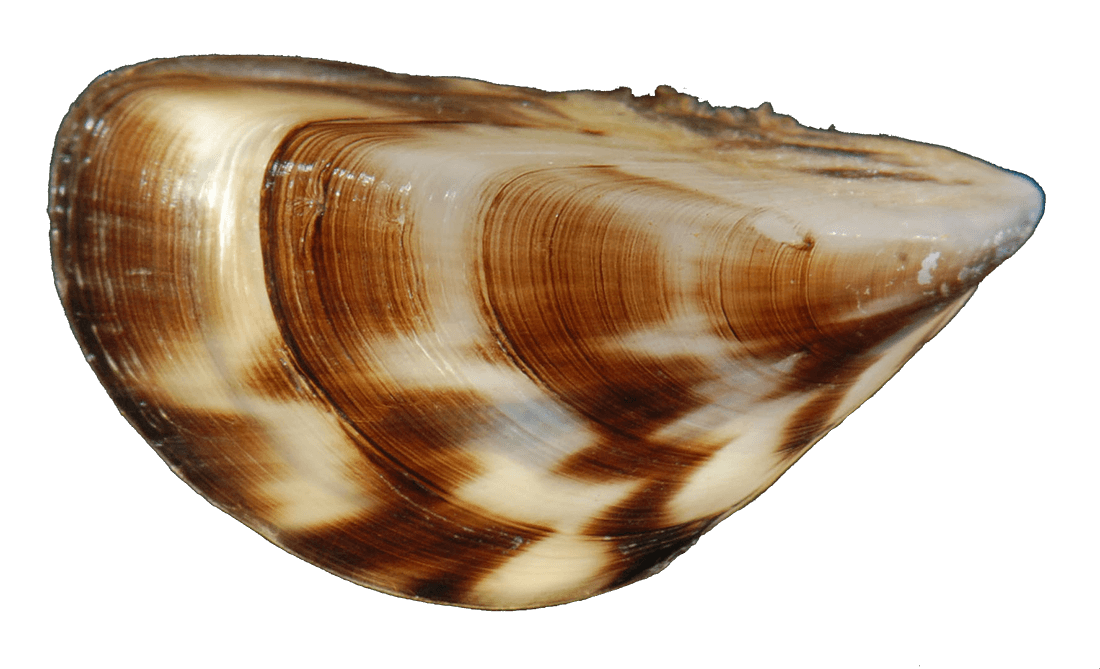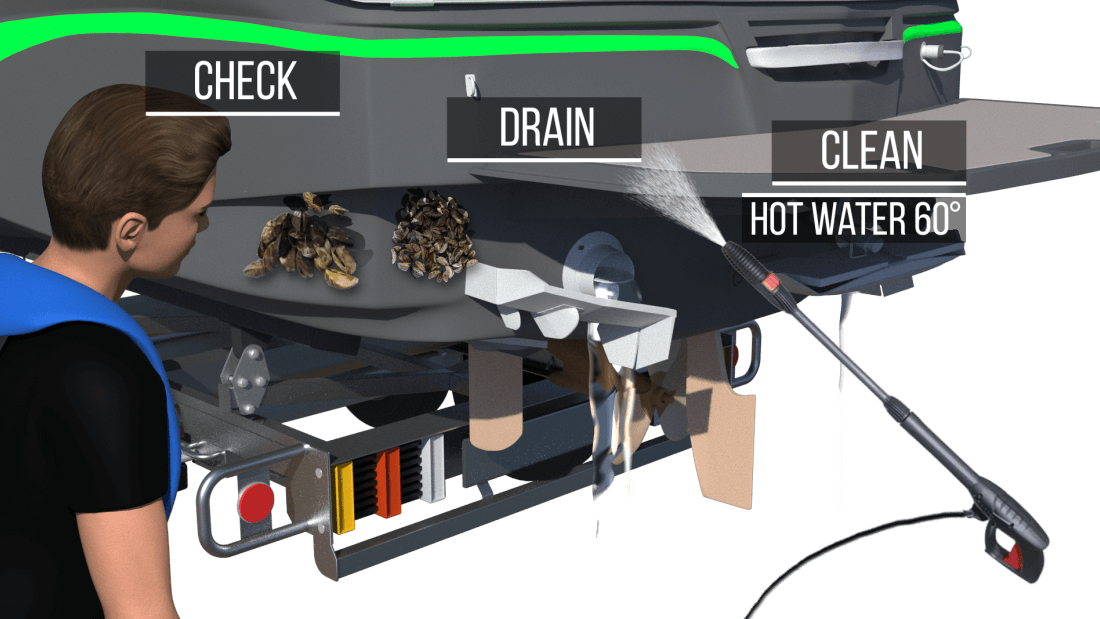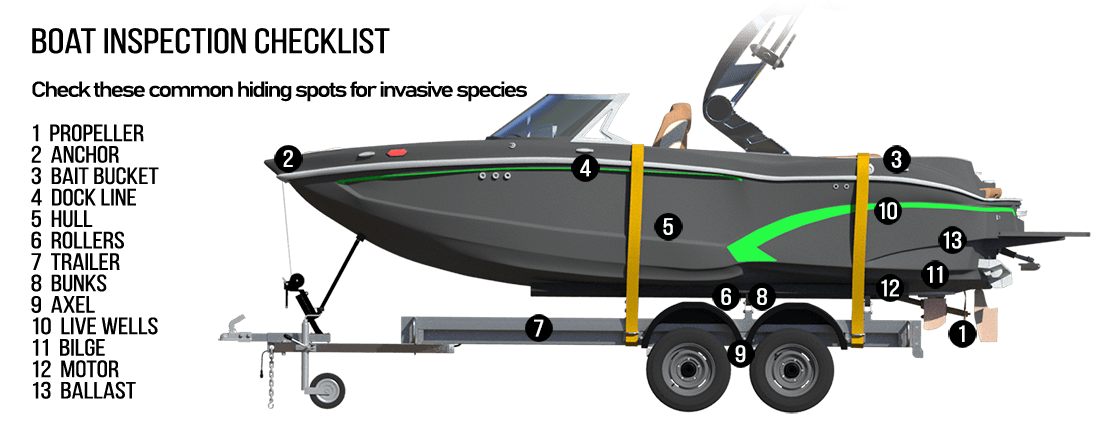Preventing Aquatic Invasive Species (ANS) in the USA
What are aquatic nuisance species?
Aquatic nuisance species are non-indigenous species that threaten the diversity or abundance of native aquatic species. In the United States there are currently more than 250 non-native aquatic species from other continents and more than 450 nonnative are from North America but have been moved outside their native ranges.
Zebra mussel
Zebra mussels are small, invasive freshwater mollusks native of Asia.
Zebra mussels are named for the dark, zigzag-striped pattern on their shells. They extract plankton and other microscopic organisms from the water column for food. They reproduce rapidly, with each female capable of producing up to a million eggs per year.

Quagga mussel
The quagga mussel is a species of freshwater mussel native of Ukraine.
Quagga mussels are small, fingernail-sized bivalve mollusks with striped patterns on their shells. They extract plankton and other microscopic organisms from the water column for food. They reproduce prolifically, with each female capable of producing up to a million eggs per year.

States on behalf of water users spend tens of millions of dollars on attempting to control these prolific species every year.
Aquatic nuisance plants, such as loosestrife, water milfoil and hydrilla quickly establish themselves, replacing native plants.
Eurasian Watermilfoil
Myriophyllum spicatum, commonly known as Eurasian watermilfoil, is a submerged aquatic plant species native. Myriophyllum is characterized by its feathery, finely divided leaves and reddish stems. Eurasian watermilfoil typically grows in freshwater habitats.
It is often spread through human activities such as boating and fishing Once established in a water body, Eurasian watermilfoil can form dense mats of vegetation that can crowd out native plants and disrupt aquatic ecosystems.

Brazilian elodea
Brazilian elodea is native to South America, including Brazil, Uruguay, and Argentina. Brazilian Elodea is often used in freshwater aquariums and ponds due to its attractive appearance and ease of cultivation.
Brazilian Elodea is a submerged aquatic plant with long, slender stems and whorls of dark green leaves. It can grow rapidly and form dense mats of vegetation in aquatic environments, providing habitat for small fish and invertebrates.

Environmental and economic problems caused by the dense growth of these weeds include impairment of water-based recreation, navigation, flood control, water quality and fish and wildlife habitat.
As a boat operator, how can I help prevent the spread of aquatic nuisance species?
Boaters should be conscientious when pulling their boats from recreational waters.
You should inspect the boat and trailer, before you leave the ramp area, and remove any suspected aquatic nuisance species and mud in order to eliminate their spread to other waters that may be visited.
Please consult with your state marine patrol and local marinas to identify non-indigenous species in your area.

Clean, Drain, Dry!
Where do mussels like to hide? Make sure to inspect your boat before and after you set sail to prevent any unwanted guests!

